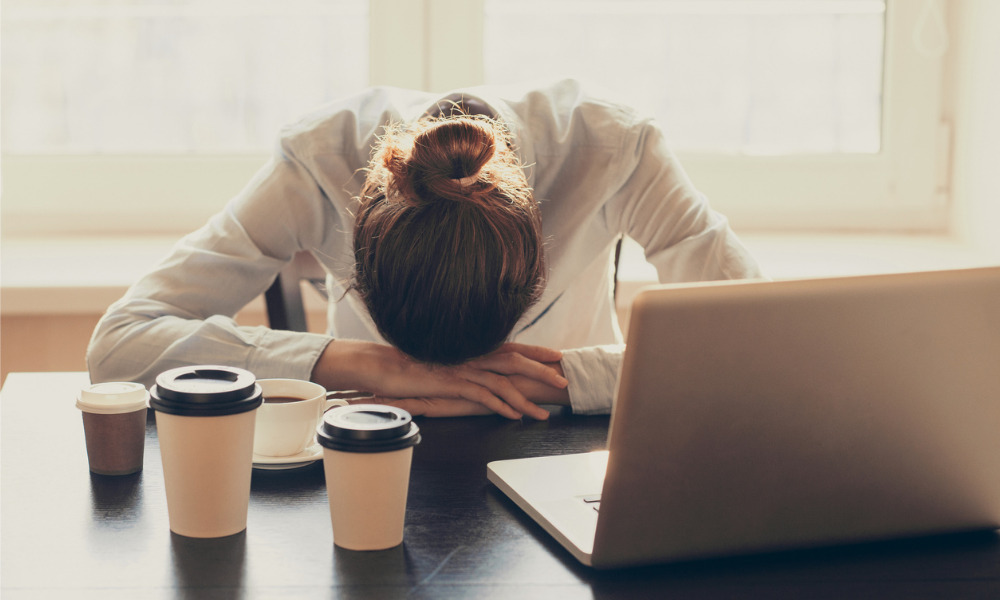
Greater flexibility helps reduce job stresses: survey

Burnout among employees has reached an all-time high, according to a global survey.
More than four in 10 (42%) of 10,243 respondents to a survey by Future Forum say they are experiencing burnout — up from 39% in May 2021 when it was first measured.
Forty-six percent of women say they are burned out compared with 37% of men. And 48% of workers under age 30 saying they feel burned out at work compared with 40% of workers age 30 and up.
Japan is seeing the highest rates of burnout:
|
Country |
May 2021 |
Nov. 2022 |
|---|---|---|
|
Japan |
42% |
50% |
|
France |
42% |
48% |
|
U.K. |
40% |
48% |
|
U.S. |
39% |
41% |
|
Germany |
29% |
37% |
|
Australia |
26% |
27% |
Respondents who report they are burned out at work are nearly 3.4x more likely to say they “definitely” plan to look for a new job in the next year than those who say they are not burned out at work, finds Future Forum.
Fifty-three percent of those who are dissatisfied with their level of flexibility say they are burned out compared to 37% of employees who are satisfied with their level of flexibility. Employees with no ability to shift their schedules are 26% more likely to say they are burned out at work than those with moderate schedule flexibility.
“Listen to the needs of your people and get to know everyone individually. Ask them, human to human: ‘How can we ensure that you remain fresh and don’t burn out?’” says one expert.
Flexible workers were 57% more likely to say their company culture has improved over the past two years compared with fully in-person workers — and they cite flexible remote work policies as the primary reason, finds Future Forum.
However, 25% of executives surveyed cited “team culture is negatively impacted” as a number one concern about offering employees more flexibility in an office.
Flexible workers are also more likely to feel connected to their direct manager (39% versus 34%) and their company’s values (32% versus 28%) compared with those who are back in the office full-time.
When compared to workers with no ability to shift their schedules, respondents with full schedule flexibility report:
Compared to those with moderate schedule flexibility, desk workers who say they have little to no ability to set their hours report:
Australian employers are bracing for a rise in costs due to absenteeism as mental health impacts the workplace. Post-pandemic, the number of days off as a result of poor psychological health is predicted to increase by 20%.
Two-thirds of all workers (67%) say they prefer a hybrid arrangement with the option to access a physical space. Why? The top two drivers are collaboration (33%) and building camaraderie (23%).
When looked at by job level, the motivation for coming into the office differs between executives and non-executives. Executives value putting in face time with management at 1.6x the rate of non-executives. Non-executives value building camaraderie at 2x the rate of executives, finds Future Forum.